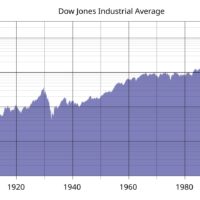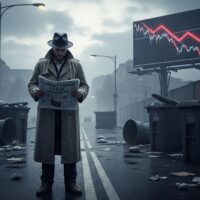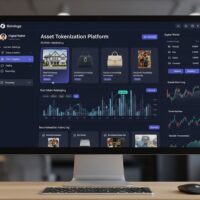
The annual retail phenomenon known as Black Friday continues to evolve, with the 2025 shopping season poised to set new benchmarks for both online engagement and in-store foot traffic. Industry analysts are projecting a significant shift in consumer behavior, emphasizing a seamless integration of digital and physical retail experiences. The strategies employed by major retailers, from Walmart and Target to Amazon and Best Buy, reflect a nuanced understanding of a post-pandemic marketplace where convenience and value are paramount. This year’s event is not merely a day but a extended season, with deals beginning in early November and stretching through Cyber Monday and into the holiday season, fundamentally changing how households plan their major purchases.
The concept of the “doorbuster” deal has been reinvented for the modern era. While limited-quantity, deeply discounted items remain a draw to get shoppers into physical stores, retailers are increasingly using virtual doorbusters and app-exclusive offers to drive traffic to their digital platforms. This dual approach allows companies to manage crowd control while simultaneously capturing the growing segment of consumers who prefer to shop from home. The lines between online and offline commerce have never been more blurred, with services like Buy Online, Pick Up In-Store (BOPIS) and same-day delivery becoming standard expectations rather than premium perks.
Understanding the competitive landscape is crucial for consumers aiming to maximize their savings. The 2025 Black Friday season is characterized by several key trends that distinguish it from previous years. The integration of artificial intelligence in personalized deal curation, a stronger emphasis on early access for loyalty program members, and a more strategic approach to inventory allocation are just a few of the factors shaping this year’s event. Retailers are leveraging vast amounts of customer data to tailor promotions, ensuring that the most appealing offers are presented to the shoppers most likely to act on them.
Store Hours and Strategic Shopping Timelines
The traditional midnight madness store openings have largely given way to more structured and often earlier opening times. For Black Friday 2025, major brick-and-mortar chains have announced schedules designed to spread out shopper arrivals and reduce the intense crowding associated with the event. Many stores will open their doors on Thanksgiving evening, while others have committed to remaining closed on the holiday, opening instead on the Friday morning. This variation creates a staggered shopping timeline that savvy consumers can use to their advantage.
Planning a store-by-store itinerary is more important than ever. The most successful shoppers often map out their routes based not only on doorbuster deals but also on published opening times, creating a strategic plan to hit multiple locations in a single trip. However, the value of this approach must be weighed against the convenience of online alternatives. For many, the effort of in-store shopping is only justified for the most significant high-ticket items where the in-person inspection is valuable or for deals that are truly exclusive to the physical location.
Major Retailer Opening Times for Black Friday 2025
Navigating the specific operating hours for leading retailers is a critical component of any Black Friday strategy. The following list details the announced schedules for key players in the market, providing a foundation for planning a successful shopping day.
- Walmart: Walmart stores will open at 6:00 PM on Thanksgiving Day and remain open through Black Friday. This early start allows shoppers to access doorbuster deals on Thanksgiving evening, with new sale phases typically rolling out at specific times throughout the night and into Friday morning.
- Target: Target locations are scheduled to open at 7:00 PM on Thanksgiving Day. The retailer has perfected a phased deal approach, where different categories of items see their deepest discounts at predetermined times, encouraging shoppers to stay engaged for extended periods.
- Best Buy: Best Buy will open its doors to the public at 8:00 PM on Thanksgiving Day. Known for its deals on electronics, the store often requires a ticket system for its most sought-after items, such as premium televisions and laptops, to ensure orderly sales and manage limited inventory.
- Kohl’s: Kohl’s is set to open at 5:00 PM on Thanksgiving Day, one of the earliest openings among major department stores. The chain is famous for its Kohl’s Cash promotional program, which effectively provides additional savings on future purchases, amplifying the value of Black Friday spending.
- Macy’s: Macy’s will welcome shoppers at 6:00 PM on Thanksgiving Day. Beyond its doorbuster deals, the retailer leverages the day to kick off its holiday season decorations and events, making the shopping experience a traditional outing for many families.
The variation in opening times creates a strategic map for dedicated shoppers. Starting with stores that open earliest, like Kohl’s, and progressing to those with later openings can maximize the number of doorbuster deals a person can access. However, it is essential to verify these times with local stores, as individual locations, particularly in regions with specific holiday trading laws, may operate on adjusted schedules.
Analysis of Top Black Friday 2025 Deal Categories
Each Black Friday season is dominated by a few key product categories where discounts are most aggressive. In 2025, the landscape of top deals reflects both perennial favorites and emerging consumer trends. Electronics, particularly in the home entertainment and smart home sectors, continue to lead, but there is a notable surge in discounts for fitness technology, home improvement tools, and seasonal apparel. The intensity of competition in these categories ensures that consumers have significant opportunities for savings, but it also requires research to identify genuine deals from inflated markdowns.
The psychology behind Black Friday deals is complex. Retailers often use “loss leaders”—products sold at a loss or minimal profit—to attract customers who will then purchase other, higher-margin items. Understanding this dynamic can help shoppers recognize which deals are truly exceptional and which are simply designed to draw them into the store or onto the website. The most informed consumers enter the shopping day with a precise list of target items and a firm understanding of their fair market price, avoiding impulsive purchases driven by the mere perception of a discount.
Electronics and Appliance Doorbusters
The electronics category remains the crown jewel of Black Friday, with some of the most dramatic price reductions on big-ticket items. Shoppers can expect deep discounts across several key sub-categories.
- Televisions: Major brands like Samsung, LG, and Sony offer significant price cuts on 4K UHD, QLED, and OLED models, particularly in sizes of 55 inches and larger. These are often the centerpiece of retailer advertising and are typically limited in quantity to generate early foot traffic.
- Laptops and Tablets: Discounts on computing devices are plentiful, with Chromebooks and entry-level Windows laptops seeing the most aggressive pricing. Apple iPad models are also frequently discounted, though the deals on their MacBook line are generally more modest and may come in the form of gift card bundles.
- Smart Home Devices: The market for smart speakers, displays, and security systems is highly competitive, leading to substantial Black Friday promotions. Bundles that include multiple devices from ecosystems like Google Nest, Amazon Alexa, and Apple HomeKit provide exceptional value for those looking to build out their connected home.
- Video Game Consoles and Games: With the latest generation of consoles now well-established, Black Friday 2025 is expected to feature attractive bundles that include the hardware, popular games, and extended subscriptions. This is often the best time of year to purchase gaming equipment.
- Major Appliances: Refrigerators, washers, dryers, and kitchen packages see some of their lowest prices of the year during Black Friday sales. These deals are often coupled with additional incentives like free installation or extended financing with zero interest, making them appealing for homeowners.
The key to capitalizing on electronics deals is early action, as the most desirable models and configurations sell out quickly. For online shoppers, this means being logged into retailer accounts with payment information pre-saved before the sale goes live. For in-store shoppers, understanding a store’s ticket or voucher system for high-demand items is critical to securing the product.
The Digital Frontier: Online-Only Deals and Cyber Monday
The growth of Black Friday as an online event has been meteoric, with many consumers now opting to avoid the crowds entirely and shop from their devices. In response, retailers have developed a parallel universe of digital doorbusters that are often exclusive to their websites and mobile apps. These online deals frequently start earlier than in-store promotions and can sometimes be even more aggressive, as retailers have lower overhead costs for digital transactions. The week of Thanksgiving, through Cyber Monday, has effectively become a digital shopping holiday in its own right.
Cyber Monday, once a distinct day for online deals, has now largely merged with the Black Friday weekend. However, it still retains a specific focus on technology and digital goods. The strategic shopper will often use Black Friday to purchase physical electronics, toys, and home goods, while reserving Cyber Monday for software subscriptions, digital gift cards, and online courses. The elongation of the sales period means that there is rarely a single “best” moment to buy, but rather a series of overlapping opportunities that require constant vigilance.
Maximizing Savings with Price Tracking and Alerts
In an environment of constant sales and fluctuating prices, technological tools have become indispensable for the modern consumer. A variety of browser extensions and mobile apps allow shoppers to track the price history of specific products, receive alerts when those items drop in price, and even automatically apply coupon codes at checkout. This data-driven approach removes the guesswork from bargain hunting and ensures that purchases are made at or near the lowest available price.
The use of these tools highlights a fundamental shift in the retailer-consumer relationship. Shoppers are no longer passive recipients of marketing and promotions; they are active, informed participants armed with data. Retailers, in turn, have had to adapt their strategies, focusing more on customer loyalty, perceived value, and service quality rather than competing on price alone. The most successful Black Friday campaigns in 2025 are those that combine compelling discounts with a frictionless and engaging shopping experience, whether online or in-person.
Logistical Considerations and the In-Store Experience
For those committed to the traditional in-store Black Friday experience, advance preparation is the key to a successful and safe outing. Beyond researching deals and store hours, this involves practical planning for the day itself. Considerations such as parking, weather, and the need to queue for extended periods should all be factored into the schedule. Many seasoned shoppers travel in small groups, allowing them to split up and cover more ground or hold places in separate lines for high-demand items at a single store.
Store layouts are often reconfigured for Black Friday, with high-demand products placed in specific areas to manage customer flow. Familiarity with a store’s typical floor plan may not be sufficient, so it is advisable to identify the location of target items upon entry. Furthermore, inventory management has become more sophisticated, with many retailers offering real-time stock updates on their apps. Checking app inventory before traveling to a store can save a significant amount of time and frustration, preventing wasted trips for already sold-out products.
Security and personal safety are also paramount during such a high-traffic retail event. It is advisable to keep wallets and phones secure in inner pockets rather than easily accessible bags, to park in well-lit areas, and to be aware of one’s surroundings, especially when carrying expensive purchases. The heightened emotions and large crowds can sometimes lead to tense situations, so maintaining a calm and patient demeanor is not only safer but can also contribute to a more positive overall experience.
Conclusion
The Black Friday shopping event of 2025 represents a mature and highly evolved retail phenomenon, blending the frenetic energy of in-store doorbusters with the sophisticated, data-driven world of e-commerce. The most successful participants in this annual ritual, whether retailers or consumers, are those who approach it with meticulous preparation, strategic thinking, and a clear understanding of the underlying market dynamics. The trends of extended sale periods, the fusion of online and offline shopping, and the use of AI and price-tracking tools have permanently altered the landscape, moving Black Friday from a single day of extreme discounts to a sustained season of strategic purchasing. For the discerning shopper, this provides more opportunities than ever to secure genuine value on a wide range of products, provided they navigate the process with information and intent. The core of Black Friday remains the pursuit of a deal, but the methods for achieving it have been fundamentally and irrevocably transformed by technology and changing consumer expectations.












